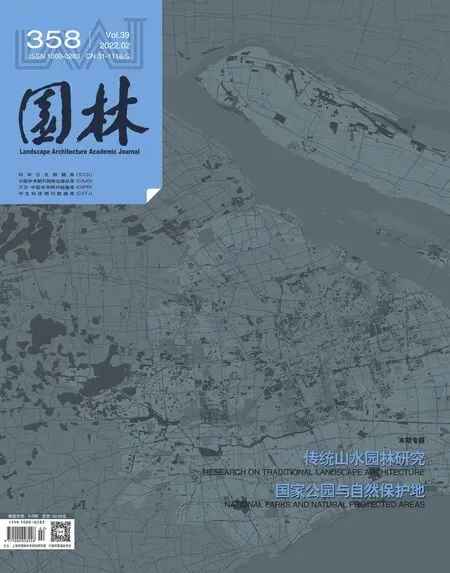Understanding the History:Inheriting and Developing Chinese Landscape Architecture
As we put conscious effort into learning from history to create a bright future,we must continue to adapt the summarized rules to a new era.
In 2011,the Academic Degrees Committee of the State Council and the Ministry of Education published the catalogue of disciplines for degree awarding and talent training(2011).“Landscape architecture” was officially included in the category of engineering and became one of 110 first-class disciplines.This means that the landscape architecture industry has been fully valued and recognized at the national level.Over the past decade,the discipline of landscape architecture has developed vigorously.Hundreds of universities across China have the related majors of landscape architecture.2021 is the 10th anniversary of the approval of the first-level discipline of landscape architecture,and it is also the historical intersection of “two centenaries”.When China is prosperous and the construction of ecological civilization is booming,the landscape architecture discipline should continue to flourish and live up to the mission of the times.However,recently,the Ministry of Education issued the catalogue of disciplines for granting doctoral and master’s degrees and talent training,which cancelled the first-class discipline of landscape architecture,causing a sensation in the industry.At this moment,when we look back at the era topic of “l(fā)andscape architecture and cultural inheritance”,there are several questions existed.Have we truly achieved the inheritance and development of Chinese traditional landscape architecture,and have we truly cultivated landscape architecture talents that the society needs?
MENG Zhaozhen proposes that “l(fā)andscape architecture” can be used as the English name of the discipline,which conveys the combination of man and nature.According to China’s cosmology,it is “Unity of Heaven and Man”.The western view of the opposition between man and nature is not in line with Chinese culture.Chinese traditional landscape architecture is the integration of art and technology.Taking rockery as an example,FANG Hui,a rockery craftsman in Yangzhou and inheritor of intangible cultural heritage in Jiangsu Province,believes that rockery is art,not cement engineering,and the value of rockery cannot be evaluated according to the cost of civil engineering.Rockery is an art work completed by engineering means.It belongs to the art of Chinese culture.It should not be studied by foreign standards.At present,after the training of modern textbook knowledge system,it is difficult for college teachers and students to jump out of the western traditional academic evaluation standards.For academic papers,we usually follow a fixed structure,such as definition,the research status at home and abroad,our own topic,the work of predecessors,my work and breakthrough.The real content of a thick paper is only a few pages.The final paper meets the “standards”,but it is separated without innovation,and sometimes even data-packed and obscure.So,how do craftsmen who are also facing the mission of inheritance and development create and interpret traditional landscape architecture?
The special topic of “Research on Traditional Landscape Architecture” innovatively introduces the perspective of the combination of scientific researchers and craftsmen.One of the papers shared the folding method of “draw shadows” and the view of“Integration” which can be used to distinguish the quality of rockeries; Taking yellowstone rockery in Shanghai as an example,the paper analyzed the reason of creating the real environment of mountains and forests under the goal of “three-dimensional”of height,depth and thickness,as well as the thinking and realm pursuit of scholars;Taking the Puyuan in Kunshan as an example,the paper analyzed the craftsman’s layout methods such as determining the main mountain,arranging the mountain situation and arranging the water environment,the landscape construction methods such as closerange caves,medium-range mountains,long-range mountains and comprehensive water features,and the manufacturing skills such as stone selection and use,collage and modeling,level and echo; One paper discussed the craftsman’s re-understanding on Huanxiu Villa and GE Yuliang,and put forward three principles of stacking mountains that integrated ZHANG Nanyuan’s “big”,GE Yuliang’s “deep” and LI Yu’s “high” of mountain;One paper systematically discussed the craftsman’s conception and technology of water management in small and medium-sized gardens at the five levels.This issue also discusses “National Parks and Natural Protected Areas”.
In the special topic of “Research on Traditional Landscape Architecture”,the integration of the perspectives of scientific researchers and craftsmen is a necessary exploration for the development and innovation of landscape architecture discipline in the new era.The development of landscape architecture discipline and industry needs to be inclusive.Expanding the existing academic system with the rules summarized by craftsmen after repeatedly testing and practice is an important practice to continuously improve the internal logic and structure of the discipline.In the international context,we should proceed from China’s reality and hold cultural confidence,so as to better inherit and develop Chinese Landscape Architecture.
January 12th,2022

